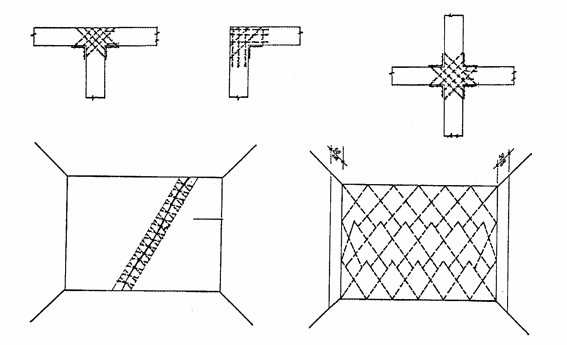Yasser Korany[1], Robert Drysdale2, Samir Chidiac[2]
- Doctoral Candidate, 2 Professor & Martini, Mascarin and George Chair in Masonry Design
- Associate Professor, Department of Civil Engineering, McMaster University 1280 Main Street West, Hamilton, Ontario L8S 4L7, Canada
ABSTRACT
The vulnerability of unreinforced masonry buildings to impaired performance is a serious problem facing structural engineers today. Unreinforced masonry (URM) walls usually constructed from bricks or blocks and in some older buildings from cut stone, were designed primarily to resist gravity loads with little or no consideration for lateral loads. Although URM buildings perform satisfactorily under service loads, there is evidence that they may suffer serious damage under high lateral loads such as earthquake inertia forces. Besides seismic loads, URM buildings may require upgrading due to abnormal loads, environmental loads, or other causes of deterioration. Several techniques have been found to be effective in retrofitting masonry buildings. However, what is appropriate for one building may not necessarily be appropriate for another. The selected method must be consistent with aesthetics, function, and the strength, ductility, and stiffness requirements.
This paper reviews and discusses the limitations of the most commonly used field retrofitting techniques namely: repointing, grout and epoxy injection, anchoring and tying, overlays, bracing, internal reinforcement, external reinforcement, post-tensioning, and base isolation. Experimental investigations on retrofitting of URM structures are also reviewed. In light of the presented review, it is clear that a successful retrofit strategy requires a full understanding of the expected response mechanisms of the rehabilitated URM structures and how retrofit measures can alter the complete building response. Axial loads, height to width (or thickness) ratios, boundary conditions, diaphragm behavior, and connections between components tend to govern the response of URM structures and play important roles in guiding the choice of the appropriate retrofit strategy.
Key words: Unreinforced Masonry, Retrofit, Repointing, Injection, Anchoring, Overlays, Reinforcement, Post-tension, Base Isolation.
RETFIT08



